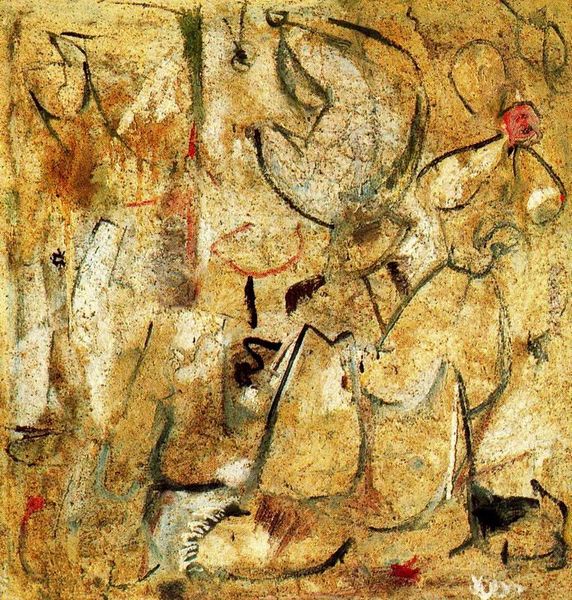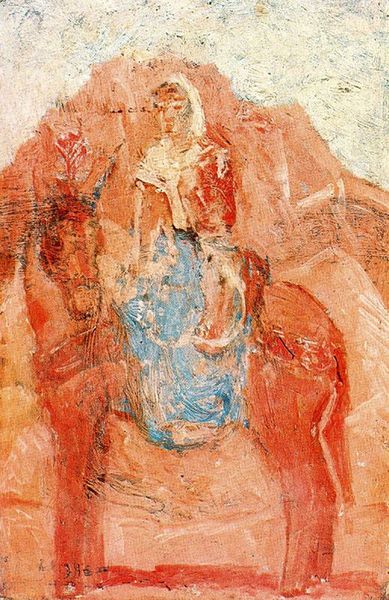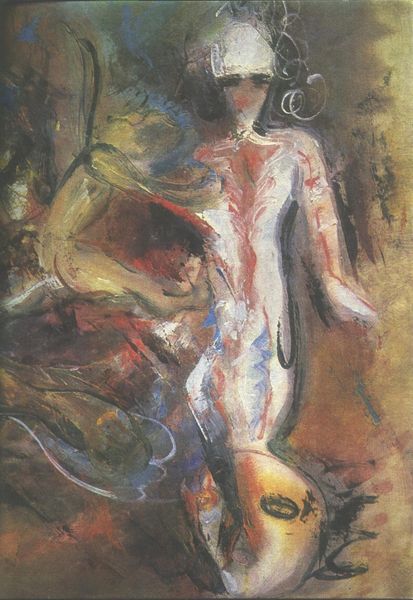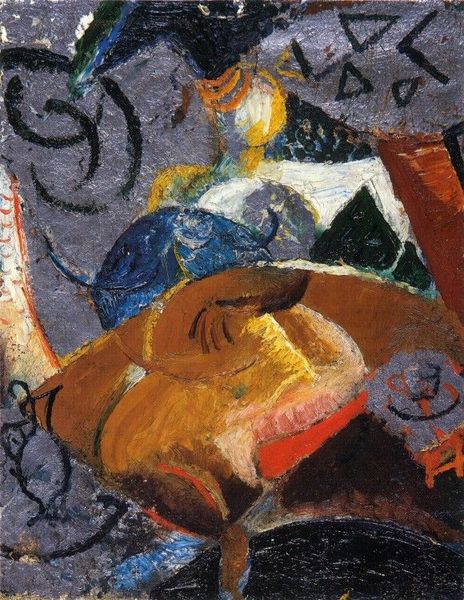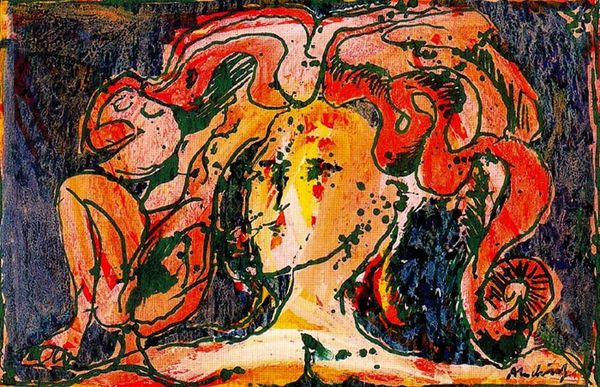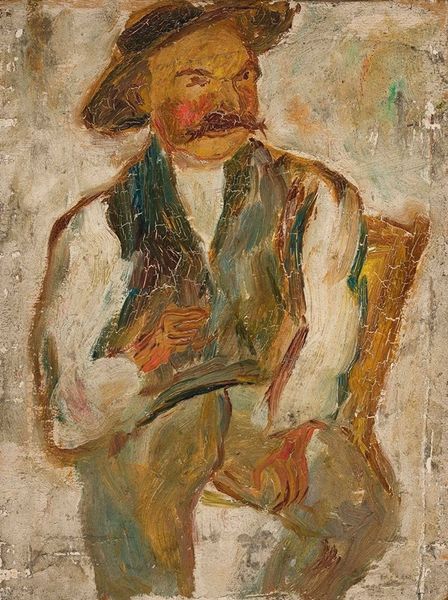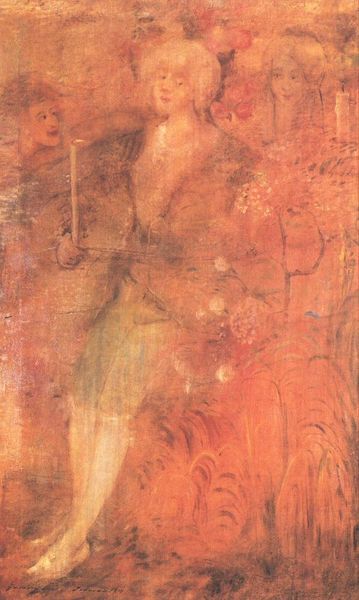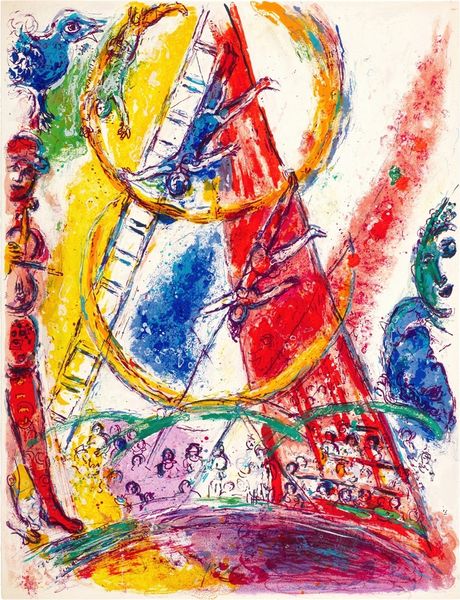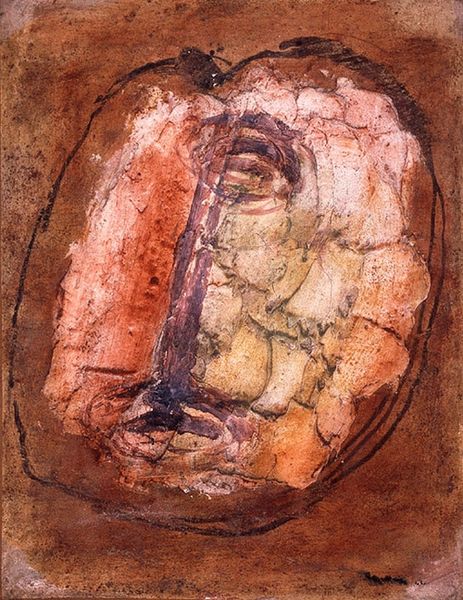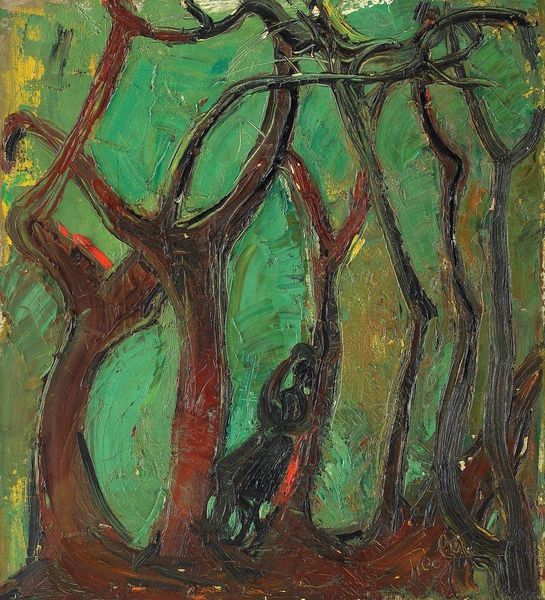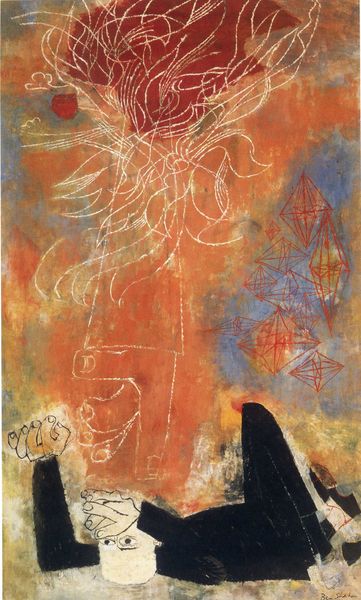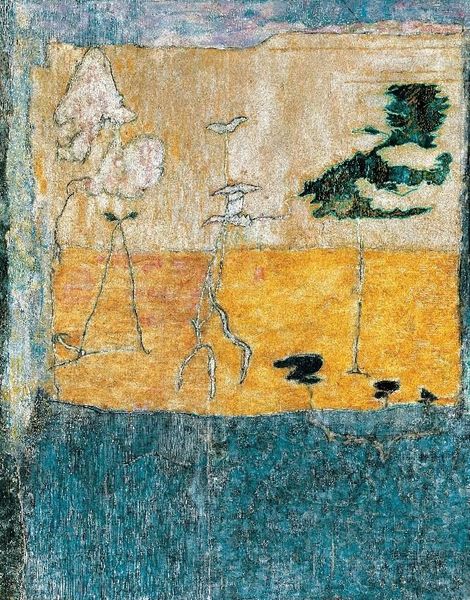
Copyright: Jean Dubuffet,Fair Use
Curator: Jean Dubuffet's "Bedouin on a Donkey," painted in 1948, strikes me as deliberately raw and visceral. What catches your eye about this piece? Editor: It's the starkness, really. The subject is presented with such...intensity? I mean, the title suggests a simple scene, but the expressionist style really complicates it. It's quite confronting. What are your thoughts? Curator: The ‘intensity’ you pinpoint is crucial. Dubuffet, a key figure in outsider art, sought authenticity outside the constraints of academic art. How might his depiction of a "Bedouin" and a donkey challenge colonial-era orientalism? The exaggerated features, the raw brushstrokes – could these be read as a deliberate disruption of idealized portrayals? Editor: That’s interesting! So, you are saying that instead of aiming to depict a beautiful exotic scene, he critiques how "Bedouins" are typically represented? The distorted features, like the big teeth, are not just a stylistic choice but a conscious political statement? Curator: Precisely. And consider the timing: 1948, a period of intense post-colonial debate. Dubuffet's choice of subject, rendered in this deliberately unschooled style, implicitly questions Western perceptions and power dynamics. The mud-like palette, the figure’s almost grotesque rendering, all point to a conscious rejection of beauty as a colonial tool. What is “beauty” in the face of war, trauma and dehumanization? Editor: I never would have considered that! It makes me see how art can challenge accepted ideas. The artist really conveys emotion with such bold lines and colors. I thought he simply lacked training. Curator: That's a common misunderstanding about outsider art. It's not about a lack of skill, but a conscious decision to operate outside conventional aesthetic boundaries. By looking at his practice as situated within larger social and historical narratives, it gives us an avenue into reconsidering ingrained, harmful notions. Editor: Thanks! I see this painting in a new light now. The piece becomes much more than a simple, crude depiction. Curator: And that's precisely why understanding the social context is as important as the art itself!
Comments
No comments
Be the first to comment and join the conversation on the ultimate creative platform.
